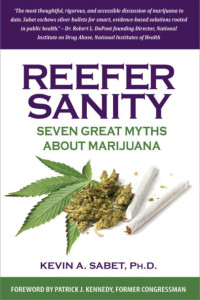Years ago, very few students utilized the counseling centers on college campuses. In 1980, most people that saw a therapist on campus did so to discuss relationship problems or academic stress (both great reasons to see a therapist).
College counseling centers began to come under scrutiny after the Virginia Tech Massacre on April 16, 2007. After a couple of years, it became apparent that the Virginia Tech Counseling Center failed on a number of levels:
(1) The shooter first made contact with the center in 2005. Despite the fact that he said his problems persisted, the counseling center did not follow up properly nor get him in for further evaluation and treatment.
(2) The counseling center director took the files home and did not find them until 2009. He was fired soon after the discovery.
(3) (this one isn’t the counseling center’s fault) The school did not have a way of alerting students about an emergency. Afterwards, they made it so people get texts and emails when disaster/tragedy strikes. Numerous other schools have followed suit as well.
Virginia Tech was not the first shooting by a student with mental health problems. There was a 1991 shooting at the University of Iowa. In 2008 at Northern Illinois University, 5 students were killed and 20 more were injured by an alumnus who had mental health problems and stopped taking his medication (I don’t see what could have been done here to prevent this one though). In 2011, Jared Lee Loughner shot Congresswoman Gabby Giffords and killed 6 others in Arizona. He had been suspended from Pima Community College because of his bizarre behavior caused by mental health issues and substance abuse. Here is a list of high school and college shootings from around America. Many of them involved students with untreated (or poorly treated) mental health issues.
Those disasters are not the fault of college counseling centers, but they have brought increased scrutiny to those centers. In some of those incidents, something more could have and should have been done. Unfortunately, schools are now getting very nervous and are sometimes kicking kids out of school instead of dealing with them in a proper way. This is a very relevant article from Newsweek regarding this that was published in February, 2014.
Despite the ever-increasing number of students on-campus and those seeking mental health & addiction treatment, Universities are not adequately hiring new staff members. That recent article for Inside Higher Ed states that the top two reasons why students come in for treatment in 2013 are for anxiety and depression (relationships have dropped to 3rd). In an alarmingly growing trend, 18% of students who access services at college counseling centers claim that they have some thoughts of suicide.
For a little over a year, I’ve been talking about the problems with college counseling centers when I conduct trainings at colleges. Here they are:
(1) At the largest schools, the number of students that attempt to access services increase by 5 to 9% each year (over the last 5 years). Schools are not hiring staff at the rate to deal with it. Most administrators are asking therapists to “do more with less.”
(2) Most clinicians are woefully unprepared to deal with issues involving suicide, alcohol abuse, drug abuse or claims of ADHD. Problems with prescription drug abuse are skyrocketing and most colleges are not handling it well.
(3) Psychiatrists’ schedules are absolutely loaded at schools, and only a select few schools employ addiction trained psychiatrists.So…it’s hard to get treatment, and when one does, it may not be very good.
(4) Waiting lists for counseling at some schools take 4 to 6 weeks. They will deny this to the media. Ask a student at a school of 30,000+ to call the school’s counseling center and see how long it takes to get a triage appointment and then an in-person appointment.
(5) Males access the counseling centers at a much lower rate than females.
(6) Minorities access the counseling centers at a much lower rate than whites.
(7) Veterans are extremely reluctant to go to the college counseling center.
(8) College counseling centers have an over-reliance on individual therapy. Groups, outreach work and getting embedded in the communities are still the exception, rather than the norm. Those three models should become the norm, especially if there are not going to be enough new staffing hires.
(9) Much of college life encourages/supports excessive drinking. Greek life and football games are deemed untouchable by some alumni. Senior administrators are afraid to take on those institutions and the culture that surround them. College counseling centers continually deal with the fall-out. Directors of College Counseling centers seem to have little influence on alcohol, illegal drug and prescription drug policy on campus.
(10) Most college counseling centers or university policies change only after a high-profile death happens. Like this one at Rutgers, or this one in Maryland that happened today, or this one at Lafayette from last year (It’s an easy exercise…see how many examples you can find in a half hour. Email me and I’ll make a new post with all the examples I get). Some of these could have been avoided if there were better policies in place beforehand.
These policy changes, the expansion of programs and the hiring of staff require political willpower and money. Those are two resources in supposedly short supply on most campuses. If you see change happen, it probably took place after item (10) of my list happened.

